Microscope Activities for Science Teachers and Homeschoolers
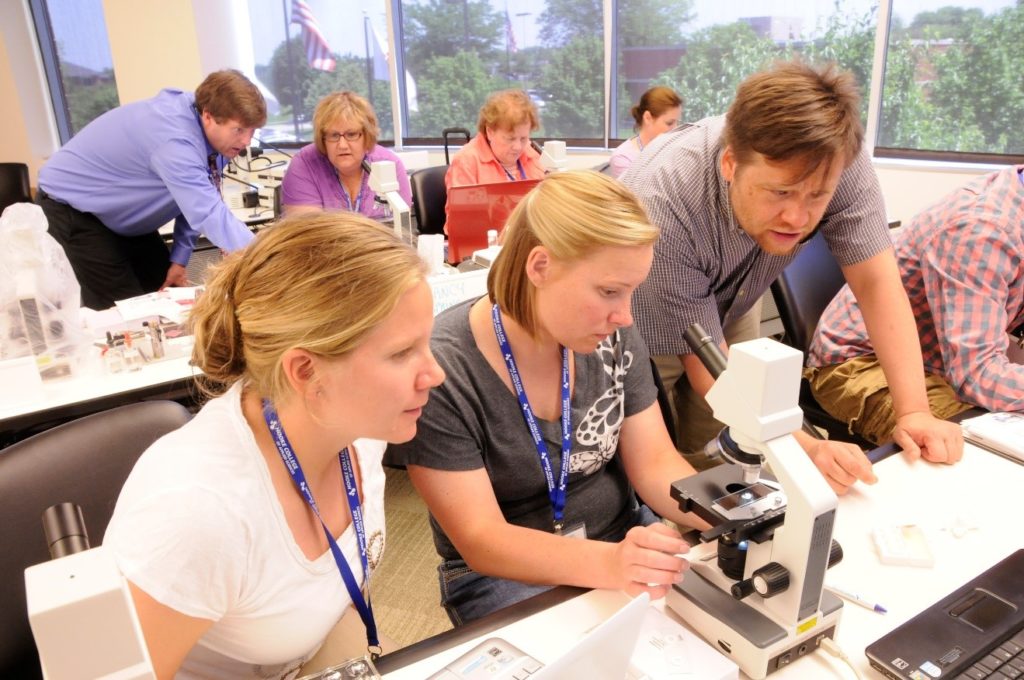
In 2008, Hooke College of Applied Sciences offered its first microscopy workshop for middle school and high school science teachers. The workshop was called Microscopy Camp, and was modeled after a program started in 2006 at the University of Minnesota. The goal of the workshop was to introduce science teachers to new and intriguing microscopy experiments not commonly found in science textbooks, and to encourage them to use the microscope throughout the school year. The workshop was taught by several staff members of McCrone Associates and Hooke College of Applied Sciences, along with two veteran high school science teachers who regularly used microscopes in their science classrooms. During the workshop, each participant used a Motic® light microscope with a built-in digital camera, and received a book of experiments written specifically to be used with the Motic student microscope. In my opinion, it was the book of microscope activities that led to the overall success of these workshops.
With our yearlong isolation due to the COVID-19 pandemic, parents, grandparents, and other relatives have reached out to us for ways that they can introduce children to microscopy. As we made our recommendations for microscopes that could be purchased for home use, we also started thinking about the really cool experiments we carried out during Microscopy Camp. We thought that these experiments would be of interest not only for all of the science teachers out there, but for homeschoolers and amateur microscopists, as well. Now, for the first time, these microscopy experiments are available on our website.
View the complete set of microscope activities, or keep reading for the rest of the story about how our book of microscope activities came to be.
A Classic Textbook Case
As we started developing the curriculum for Microscopy Camp, we began searching for a suitable textbook for the course. We found that most science textbooks for middle school and high school teachers that contained any reference to the microscope were typically biology textbooks. We also found that within an 800+ page biology textbook, you would usually find two pages referencing the microscope, buried somewhere towards the back of the book in the appendices. These pages were mostly generalized descriptions of the microscope, listing only the basic parts, usually with a generic drawing along with a handful of biologically-based experiments.
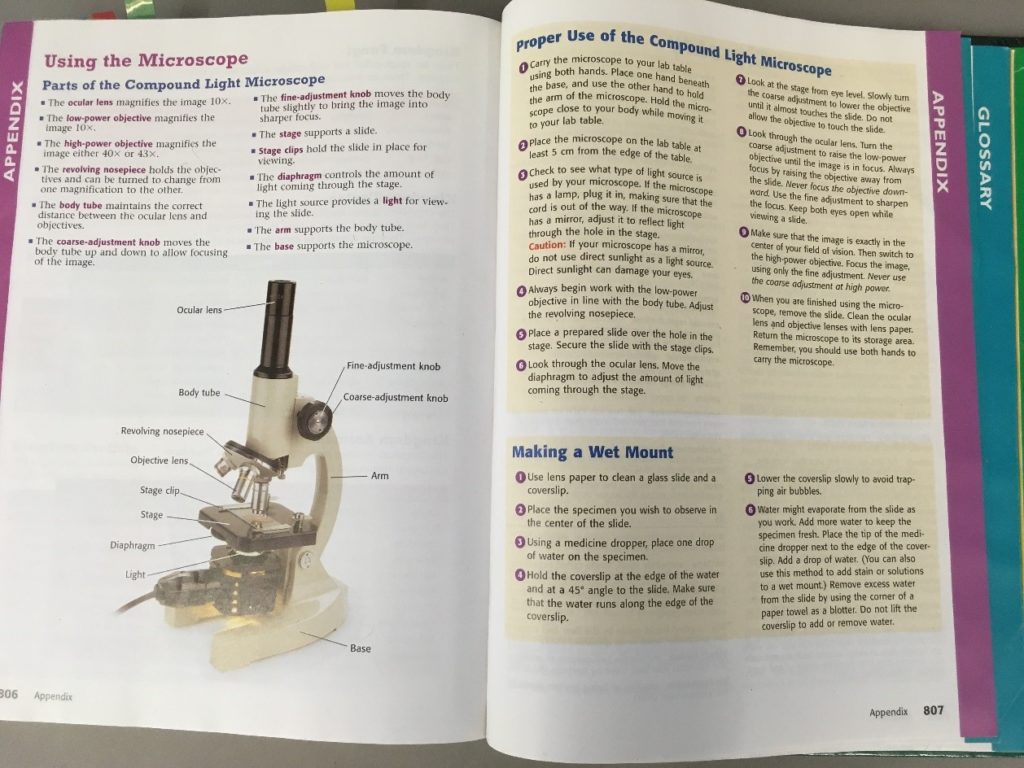
The entire book is 826 pages, and these are the two pages devoted to the microscope. There are a few paragraphs scattered throughout the book about how the microscope is used to identify and study certain specimens, along with only three experiments that list the microscope as a requirement to carry out the experiment. Also, notice on the right-hand page under “Proper Use of the Compound Light Microscope” is the obligatory mention to the student that they must “carry the microscope with two hands” printed not once, but twice.
In talking with a number of science teachers, we learned that in most instances, microscopes were only used for a few days in class and then returned to a locked cabinet in the classroom where they sat idle until the next year. We wanted to change this mindset, and offer our Microscopy Camp attendees a different way of thinking about using microscopy in the classroom. We wanted them to be inspired, and in turn, to encourage the use of the microscope more often, and preferably even leaving the microscopes out at student workstations throughout the school year.
So It Shall Be Written
It was apparent that in order to provide the kind of instruction envisioned for our version of Microscopy Camp, a new textbook would have to be written: a book that not only taught the proper use of the microscope, but one that included interesting experiments with a certain wow factor. So we turned to our Scientific Advisor, John Gustav Delly, who was up for the task. In about a year’s time, he put together a collection of 24 microscopy experiments and called the book Microscopy Experiments Featuring the Boreal/Motic Microscope. The 24 experiments ranged from how to use a microscope, to covering advanced topics such as polarized light microscopy, Rheinberg illumination, and ultraviolet fluorescence microscopy, all centered on the Motic microscope.
By the time we ran the Camp again in 2010, Motic was in the process of redesigning their line of student microscopes. We also learned from the first group of teachers that the bulk of the microscopes used back in their classrooms often were mixtures of different brands—some new, along with much older models. So the book of experiments was updated and no longer focused on a specific microscope model of microscope. The new version included experiments that featured both modern and vintage microscopes. The number of experiments was expanded to 36, and the title was changed to How to Use the Microscope: A Manual of Experiments for Middle and High School Science Teachers. And that’s how our manual of microscopy experiments came to be.
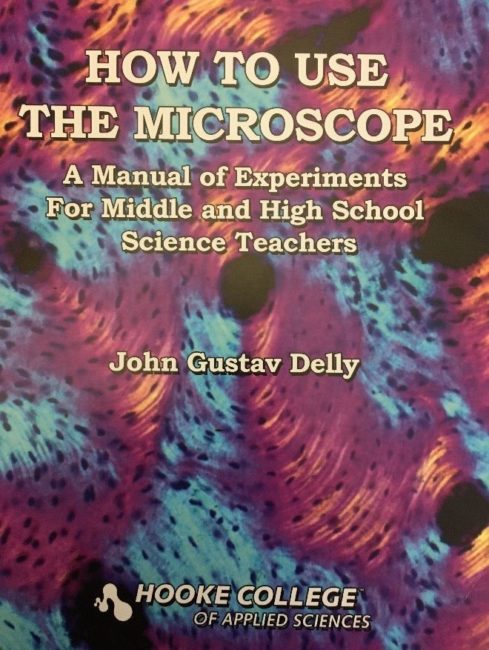
The Rest of the Story
As it turns out, writing a book of microscopy experiments was only the beginning. We thought the book was great, but we wanted to know what the teachers thought of it.
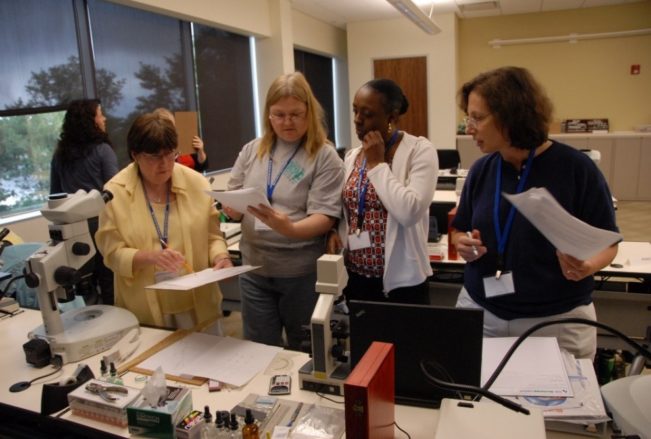
At the start of the Camp we surveyed the teachers to understand what types of microscopy experiments they were using in class. Many reported experiments designed on use of a stage micrometer and other basic forms of measurement using the microscope. As we expected, biologically-based microscopy experiments were widely reported, including plasmolysis of onion cells, the study of bread and fruit molds, mitosis exercises, Gram staining of yogurt, and examining mushroom spores.
After these initial introductions, it was time to start making our way through our new microscope curriculum. We wanted to capture feedback from the teachers after performing each group of experiments, so we developed an experiment evaluation form. This gave us immediate feedback from the teachers about each of the experiments, and enabled us to make adjustments for the next version of the Camp.
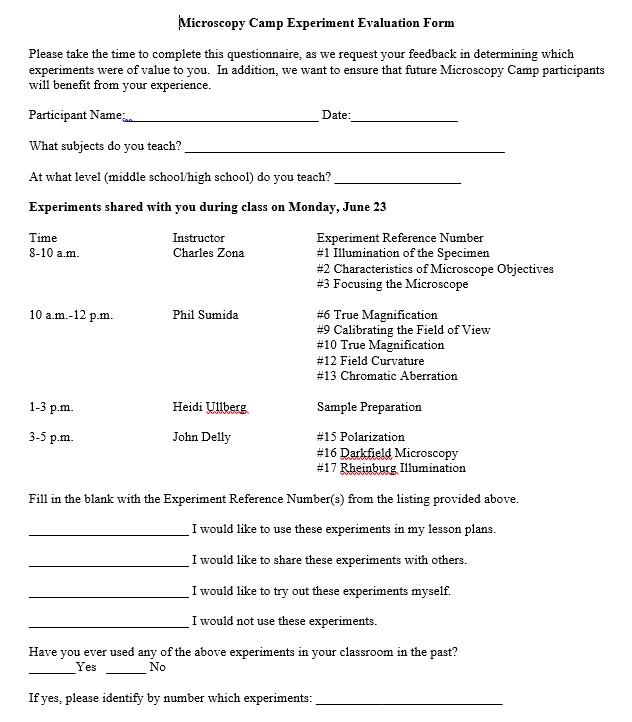
Throughout the week, we were pleased to find that an overwhelming majority of the experiments from our new manual had never been used by the teachers, and many said that they would start incorporating some of the new experiments into their curriculum; however, there were some initial bumps in the road.
All the World’s Not a Mechanical Stage
I kicked off the first day of the Camp, and my lectures covered the set up and operation of the Motic microscope along with an overview of some of the basic parts of the microscope. Each of the Motic microscopes was equipped with an X-Y mechanical stage and a substage condenser. As I began discussing what I thought were basic microscope components, I could sense a room of blank stares looking back at me. When I finally asked if there were any questions, most of the teachers from the group stated that they didn’t have those accessories on their microscopes at school: no mechanical stages and no substage condensers.
At that moment I realized we had taken these items for granted. The parts and accessories that we routinely used on our microscopes at Hooke College were not commonly found on the student microscopes used at middle schools and high schools. It was explained to us that the added expense for such items is usually cost prohibitive, especially when you are considering classroom quantities.
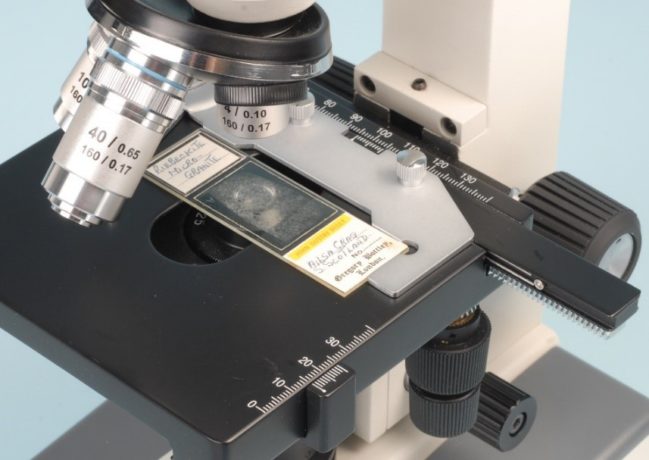
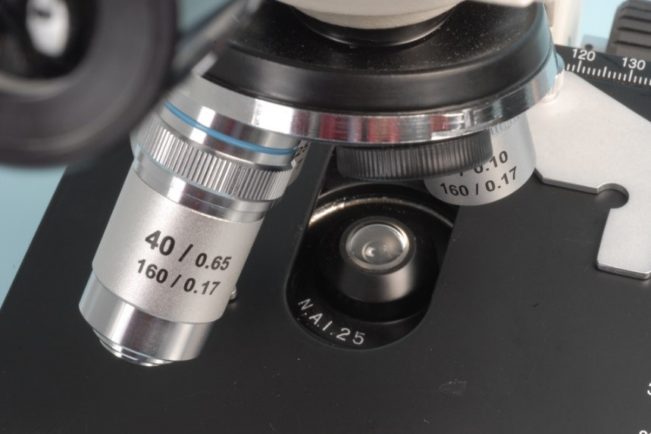
We learned that most of the microscopes used by the teachers in their classrooms were equipped with plain stages and substage aperture wheels: a simple disc with a series of round openings located and attached just below the stage of the microscope.
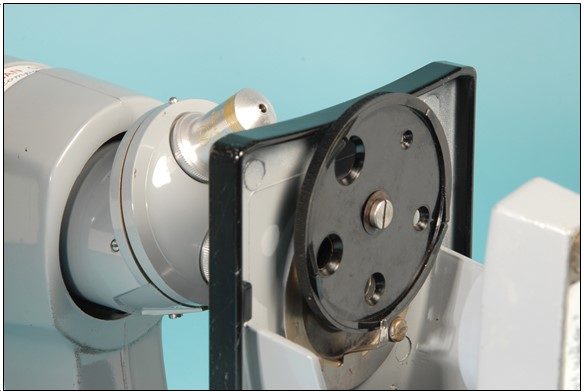
Once we were finally all on the same page, we went on to talk about the advantages of having a mechanical X-Y stage and a substage condenser. This kind of honest feedback is what drove the revision for Delly’s manual to later include 36 experiments.
Going Old School
Aside from the new book of experiments written by Delly, he recommended that we provide the teachers with a copy of one of his all-time favorite books, Exploring the World with the Microscope. This 1938 classic text written by Oscar Richards influenced Delly as a child, and later in life as a high school biology and chemistry teacher. We learned that the copyright had expired in the 1940s, so the entire book was photocopied and distributed to the teachers in a three-ring binder.
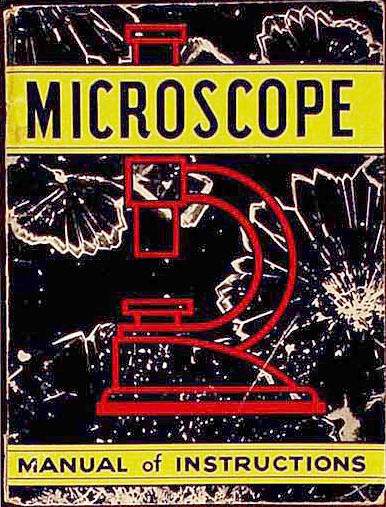
The Richards book contains 266 microscopy experiments, and starts with a basic introduction to magnification, followed by a wide variety of interesting topics. In a wonderful article published in The Quekett Microscopical Club’s journal, Delly describes why this book is one of his all-time favorite books.
“What is so special about Richards’ Exploring the World with the Microscope? The answer is in the title. Today, as in the past, we pigeonhole scientists according to their fields of specialty; they are organic or inorganic or physical chemists, for example, or botanists, zoologists, histologists, mineralogists, metallurgists, forensic scientists, etc. Richards made no such distinction when it came to the microscope; he urged the collecting and storing of all kinds of specimens. The breadth of the practical applications are indicated by some of the chapter titles…”
Delly’s description of Richards’ book captures the essence of what we were hoping to convey to the teachers in this weeklong workshop; namely, that the microscope can be employed in a wide variety of applications, and can be used to expose children to more than just a handful of biological experiments.
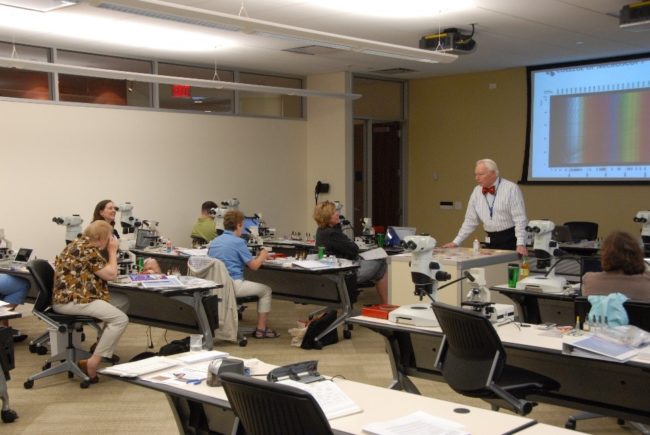
During one of Delly’s lectures to the teachers, he pointed out that if one were to perform all of the experiments in the Richards book, they would, by default, become a trained microscopist. This sounds like a great challenge to take on.
You may download the entire Oscar Richards book in six parts (scroll down to the Free Downloads section near the very bottom—see the screenshot below).
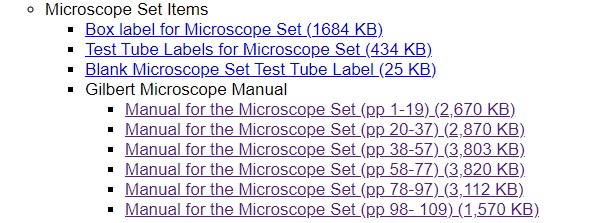
If you are looking to purchase a used copy of this book, note that the outer cover illustration and title have changed several times over the years. The book cover pictured above, for example, is simply titled Microscope: Manual of Instructions, on the inside cover, the title page is still Exploring the World with the Microscope. Usually only the illustrations of the current microscopes of the time and their light sources were changed. Other front cover titles included Fun with the Microscope, How to Use the Gilbert Microscope, and Micro Chemistry.
Final Project
On the final day of the Camp, teachers were required to give a 20-minute presentation, and demonstrate how they were going to implement what they had learned into their classroom curriculum. As part of the final presentation, each one of the teachers created handouts, notes, and microscope lesson plans for their colleagues to use back in their classrooms. Participants also had the opportunity to apply for three hours of graduate credit through Concordia University – Chicago upon completion of the workshop. Those students applying for graduate credit were graded on a variety of criteria, with the final project and presentation accounting for seventy percent of their grade.
At the end of Microscopy Camp, the science teachers left with two influential books of microscope activities to use in their classroom, and a great deal of encouragement to employ the microscope throughout the year. We hope that you enjoy these experiments, and would love to hear your thoughts and feedback.
Comments
add comment